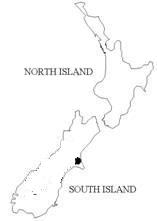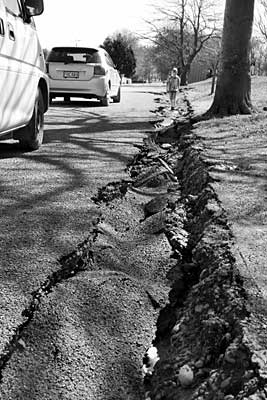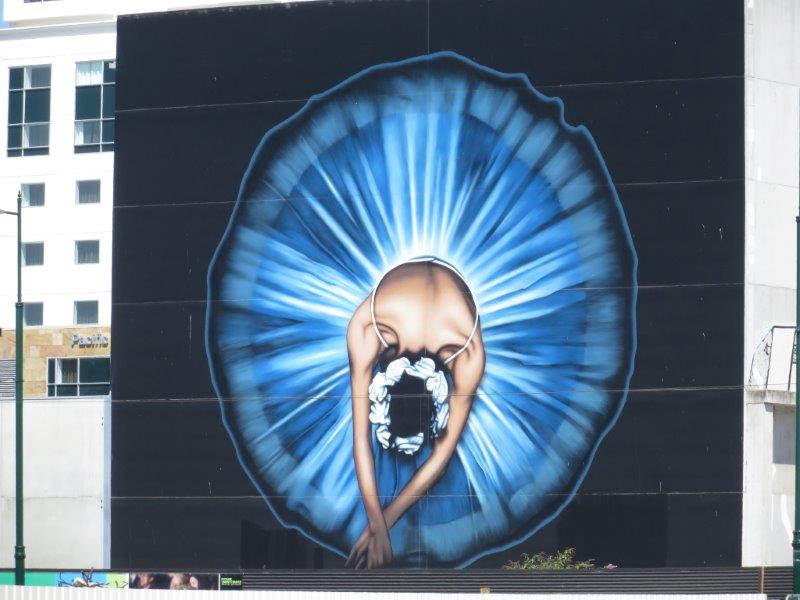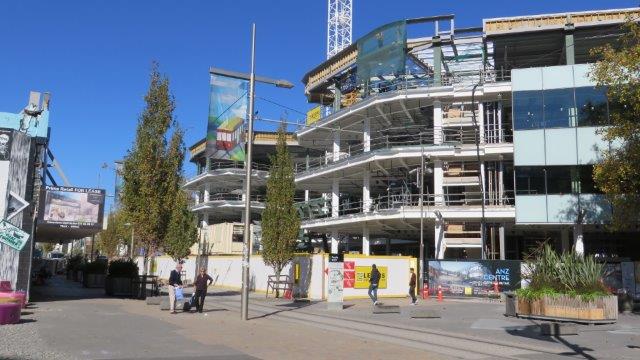Gain a true
perspective
(August 2011)
and the story
City
Population
- 400,000*
No who left the city -
4,000* (1%)
No of deaths
- 185
(Over 134 deaths from 2 collapsed
buildings)
Annual road toll - 360*
No. of births in 1st week - 68
CBD
No. of buildings in - 5400
No. of buildings collapsed - 10 (entirely)
No. to be demolished - 1200
No. to be repaired - 1100
No. safe to operate -
2300
No. of lost jobs in CBD - 900*
No. of homes in
city -
200,000*
No of homes to be demolished 7,000*
Broken sewer
drains
- 140 km
Anglican (only) churches -
19 destroyed (4 are ok)
Number of insurance claims - 360,000
Liquefaction removed
- 535,000 tonnes
Estimated cost to
rebuild - $30b*
Number of after shakes in first 18 months - 10,000
* Numbers may vary by up to 20%.
Places of interest to
KANES visitors
Central CBD
- Closed for 3 years
Chinese Restaurant (Pagoda) - Closed
Cathedral (in the square) - Closed
Catholic Cathedral - Closed
Road to Lyttelton Port - Closed
Art Centre -
Closed
Rugby Stadium - Closed
Museum -
Open & operating
Glass
Art Gallery
- Open (Civil Defense HQ)
Antarctic Centre - Open & operating
Lyttleton Tunnel - Open & operating
Port (epicentre) - Open & operating
Railways - Open
& operating
Airport -
Open & operating
Time Line for the story (Start from the bottom)
March 2012
More
people are leaving their broken homes as they are being repaired
or demolished in the eastern suburbs. New replacement buildings
in the CBD are now being constructed. Still over 500 CBD
buildings are yet to be demolished. You can see the big
hydraulic jaws large on diggers chewing and shattering the
concrete structures separating out the reinforcing iron all
ready for recycling. Many remaining condemned buildings
have multi stories some less that 10 years old. There are
lots of noises and trucks at the demolition sites. so
strange with no shoppers and no cars to be seen on the once busy
streets. The business from here have been moving to
the undamaged western suburbs and this is causing traffic
difficulties at rush hours.
12 Aug
2011
The
city's damaged CBD is changing its look as the thousand damaged
buildings are systematically demolished with hundreds of truck
loads of debris being taken to a big area be recycled.
The dumping of waste
water into the ocean is being reduced substantially now and is
expected to stop by September as the worst of the broken drains
are repaired, replaced and discarded.
There are still
families living in many of the 5000 irreparable homes.
Most have electricity water now but there is a larger proportion
without drains. (Note; there are 130,000 homes that are
not damaged)
About 3 weeks ago
the city was covered with cm of snow it was another challenge
and beautiful and exciting as it was the word went around it
"was the icing on the quake" It is all gone now.
Around 4000 after shocks
to date. They are
reducing but still occurring The numbers are over
The huge rugby
stadium and 2 cathedrals still have uncertain futures. Reports
are not giving us hope for there survival.
Ideas and plans for
the future of the CBD and eastern suburbs are being made public
and showing that the city's CBD will be made up of new a low
rise buildings and maybe a light rail system while the eastern
suburbs will be adorned with more space and delightful parklands
around the river. We will see this after 10 years and
several $b expenditure.
June 23
Most damaged areas in the
Eastern suburbs occurred near the meandering Avon River.
Liquefaction and slumping of the homes has been the main cause
for them breaking. Residents here can collect a full government
valuation for their land before the quake and claim insurance
for their buildings. Volunteers are out on large numbers
again clearing the mud that washed up from the ground during the
3rd big shake that damaged this part of the city. Sprits of the
residents are low.
14 June
A (6.3) earthquake again hit the city’s
closed off CBD and Eastern suburbs. (20% Christchurch's area).
Scores more houses & 100 more buildings in
the fenced off CBD areas have been added to the demolition list. The
estimated extra cost is $5b. One elderly man in a
rest home fell and later died. Two people were admitted to
hospital. The rest of the south Island was not affected.
Reports say 60
injuries reported 15 people kept in hospital. Lots of You Tube videos
Power is now been restore to most of the
13 June 2011
Reports coming in are indicating the more
liquefaction than as the Feb event. There are more broken
buildings in the fenced off CBD and more rocks are falling from
the Sumner cliffs . No serious injuries or fatalities reported.
Buildings at risk
have been closed or removed so not expecting many injuries.
The reports are saying many roads are again closed, bent, broken
and flooding. The Avon River is flooding its banks in places
(that makes me wonder if the whole city has tilted a little yet
the tide is high). Streets are jammed as 100s of thousands of
people creep home. Power was off to 54,000 homes but this will
improve quickly. There is more damage to water and drain
systems.
The airport is open and operating
and its
a warm sunny winter day.
*************************
Reports on
the Feb 2011 Earthquake
Three months after the Feb Quake June 2011
Christchurch is a sad city.
Many residents
are still having difficulty and receiving medical support.
The central CBD is still closed and buildings are being torn
down by large machines everywhere. One insurance company
has had to seek help to ensure it can meet its claims. Businesses are slowly opening as the debris and damaged
buildings are removed and made safe. Eastern suburb homes are still without normal toilets
as the broken drains have to be replaced. Temporary water and
power connections are operating for all inhabited homes.
The special
geography of this event
The energy
released by this earthquake (after shock) was one 8th of that of
the September event. The horrible devastation was caused
because the energy release was concentrated within a 7 square km
area that unfortunately included the CBD and eastern suburbs of
Christchurch. Here the "acceleration" or shaking force was much
greater that the September event. The "epicentre" of the quake
was just 5km deep (Sept one was 33km below) and it was 3km from
the the city centre (when the last event was over 40 km from the
city). - hence the devastation. The fault that moved had been
stable for 16,000 years.
Report 30 March
While the
rest of New Zealand is working normally the "no go" cordon
around the CBD of Christchurch is slowly being reduced as the
clean up continues and buildings are made safe. Power is fully
restored to the city now and most have water. Repairs to
the drains and roads are high on the priority. There are
cranes, diggers, loaders, trucks and dust all around the
effected part of the city. Some CBD businesses are beginning to
open as their buildings are declared safe and the excluded area
shrinks. There are, however, frustrations at the
system being slow, understaffed and pedantic processes while so
many others are doing nothing; while they wait to be "allowed"
to access their properties and businesses many of which have
undamaged buildings and unsecured stock and plant . Most
businesses are not allowed access their stock and plant to move
elsewhere. Traffic is very different now and many residents are
becoming resigned to an unknown future in the hands of the
government authorities. Major traffic thoroughfares are closed
causing gridlocks in many inner city areas while the once always
busy streets are so deathly quiet in the CBD. Most of the
city malls and markets are full of shoppers every day.
Those in those few malls in the quake area lie damaged, quiet,
cold, locked and deserted. The optimists are dreaming of a new
ultra modern city centre with the latest and future designs
rather than the old ornate grandeur of the past.
Report Day 13 March 6
To day business
owners and residents will have a limited access to some parts of
the CBD to access their property. It seems there were no people
caught in the material that fell in the cathedral.
Report Day 11 March 4 2011
As work continues 24
hrs a day to make the CBD safe and recover bodies authorities
are holding cordons tight. Some residents and hotel guests have
special very restricted passes to access accommodation when
deemed safe. For western suburbs life is quite normal. In
the eastern suburbs those who stay on have a hole in the yard
for a toilet or walk to the end of the street to use a portable
toilet. They can use a visiting mobile shower unit and
carry water from tankers placed around the areas. Fund
raising is being carried out worldwide and these are being
distributed for food, emergency supplies, and special
accommodation. everyone is grateful for the help offered Today
is Red & Black day. (these are the sports colours for the area)
Report Day 10 March 3
Only one body was
recovered by 1000 workers. Nice weather, CBD still blocked off.
Police arrested 3 people last night in the area. Irritations
with the slow pace of progress is being expressed.
About 40 more bodies are yet to be recovered and maybe 1,000
buildings must be "made safe" (demolished) using heavy
machinery. Around 4,000 business owners and residents want
to recover their computers, software records and valuable
equipment so they can assess where they stand and look to find
how they might restart their lives for themselves and their
staff. Thousands of cars are parked, un-damaged, on the
streets and intact parking buildings.
Report Day 9 March 2
String hot irritable
winds will to stir up the dust and the residents today.
Businesses are rushing for rental space in the western suburbs.
State of emergence re-declared for another 7 days. More
volunteers moving to help the residents remove up to a metre of
sandy mud in the streets and around houses. Discussions are
looking forward accepting that the most of the old buildings
will be absent from the new city. There will be more space, more
parks and gardens. Amazing inspirational stories of bravery,
initiative and endurance are being seen.
Report Day 8 March 1
Two minute of
silence to be 1 week after the event. This is being carried out
through out NZ and some parts of the world CBD Closed down.
Questions being asked how two of the biggest killer buildings
(of about 150 people) were cleared for safety after the last big
shake. Work is beginning to recover the (20*) bodies
in the 3rd killer building, the Cathedral. Teams of
volunteers and experts are organised to gather information then
deliver the help to where it is most needed for people in the
eastern suburbs. Priorities of council is to get the water,
power and sewage working. Processing of the dead is very
slow and is causing frustrations for for loved ones.
Report Day 7
Fear of more rock
falls Near Sumner. More cliff top houses evacuated Clean
up of liquefaction, repairs to water sewage and power
continuing. Teams of neighbours working together in the
suburbs. Rescue teams helping with food, accommodation and
support as individually needed. The buildings are being
assessed for degree of danger. Dangerous buildings are being
destroyed by demolition teams.
Report Day 5
The
process of identifying the dead continues with names are being
released slowly. 20 bodies are expected to be recovered from the
Cathedral. Eastern suburbs are without power, tap water
and toilets and will be that way for sometime yet. Food, water
and toilet are being sent in to those folk that have not left
the area. Fear of danger from Leaning Grand Chancellor is
reducing and it may be entered soon. (it will be demolished)
Help arriving from everywhere.
Report Day 4
This
is a grim day as the dead are now removed and the names
released. The recovery of victims continues. A 600
Search & Rescue volunteers now from worldwide are now in the
city. They are clearing most of the victims of the event
caught in 4 of the completely destroyed buildings. Teams
are looking for the remaining missing people from the other
destroyed buildings and likely places . Some teams are to help
those "camping" in the eastern suburbs. People without
homes are offered billets with families in the undamaged suburbs
and the surrounding towns. Hundreds of students are helping
clean up damaged neighborhoods
Report Day 3
The world
countries are sending in specialised search & rescue teams to
supplement those gathering from various centres around New
Zealand. Water trucks and porta-loos are being arranged for the
Eastern suburbs. Streets being cleaned for repair work.
Rescue work in the CBD continues. A major 26 story hotel
in the CBD is beginning to lean and is causing concern. Cell
phone service intermittent. Night curfew around the CBD
Military desalination plants served 4,000 with water
Report Day 2
A national state of emergency has been declared. Visitors are
being flown out of the city so international rescuers can take
the available accommodation. People with sound homes are asked
to accommodate. 3000 homeless in emergency shelters at schools
and sports grounds. Power cut to 90% of the city. 80% of the
city has no tap water. Eastern suburbs are not able to use their
toilets. CBD is completely evaluated except for organised rescue
teams. Many roads and bridges in the eastern suburbs impassable,
huge liquefaction deposits. Airport closed to all but emergency
flights.
1.45
Considerable loss of life expected
Feb 22nd 1pm
Christchurch has been rocked by a more
severe earthquake than the first felt in many parts of the South Island.
Reports of injuries and collapsed buildings are coming in. A witness
told Radio New Zealand a church had fallen to the ground. The town centre is
packed with people, hugging and crying, while the concrete had lifted in
places with trees uprooted and the Avon River has turned brown, she said
Loss of life expected
Tuesday 22 Feb
2011 (Lunch Time).
A huge land wave (estimated 1 m high) rolled through the CBD and
eastern suburbs throwing cars off the roads.
Sadly 2 multi
storied office blocks collapsed and killed 134 while another 47
people lost their lives elsewhere with falling debris from 900
damaged buildings
About 4000
buildings in the CBD stayed in tact and about 25,000 people went
home to their families. The epicentre was under the city.
Report on the main quake 4th
Sept 2010
An average of 18 earthquakes over 7 strength occur on the planet
annually. Most are harmlessly remote from major settlements.
Geography
The land in the “English Culture
& Volcano Zone” came from river gravels from the eroding (& uplifting)
Southern Alps. There are areas of fine sands laid in some pockets. As the
the English settlement grew the areas of soft mud and fine sands were
developed and today these places sustained most damage (I guess about 8% of
the city). When the quake hit mud spouted like geysers out of the ground
covering yards (up to a metre deep in some places).
Crevasses and mounds materialised in just one minute.
Geologists
say this fault has not moved for 16,000 years
The community swings into action
The first message was to check
your neighbours and clean up the chaotic mess inside their homes. No water,
over flowing sewage pipes continuing large after shocks and no power added
to the distressed. Some people could not get out of their bent houses.
Civil defence set up safe areas for the traumatised and homeless. A state of
emergency was declared. The CBD was closed to stop all but essential
services. Over the first two days the power people restored electricity to
90% of the city and the water people set about repairing the water pipes.
Authorities visited the worst affected buildings assessing the degree of
safety and placing notices on each: “Safe” “Restricted Use” &
Unsafe” Diggers and drain layers began digging and replacing the pipes
while pumps and generators provided the essential services to the distraught
residents. Sewers were kept clear by tank cleaning teams.
In the CBD
about a dozen obviously unsafe buildings and those that had collapsed are
being cleared away. Four were currently being pulled down at the time
I was there. About 10 cranes were in the CBD streets lifting assessors and
repairers on to various buildings to carry out their jobs.
All
schools and universities were closed. University students set up
volunteer teams and were out with shovels and wheelbarrows helping residents
clear the liquefaction deposits and bricks from private homes.
The Buildings
In the CBD it seemed to me about
half of the few pre 1920 buildings were badly damaged and declared for
“restricted access only”. Steel “bandages” are being placed on a
number of buildings that are damaged but probably saveable.
Most
newer buildings in the CBD and the earthquake strengthened heritage
buildings did not suffer irreparable damage.. 80% of businesses are now
operating again.
About
half the brick chimneys in the city were broken, many old brick walls
collapsed and cracked. They say 2500 buildings have been significantly
damaged.
The
pockets of liquefaction in the sandy low lands around the river
mouths & coasts are where major structural damage occurred. Here
places broke, sank and tilted. Underground concrete drain access facilities
“floated” up to 20cm above the road in some areas. Broken sewer and water
and pipes are everywhere.
Along the fault, (about 20 km away in the farmlands), fences and roads that
displaced about a metre have now crept to 4 metres with the after shocks.
Some farm land was so badly
cracked it seems to be unusable for animals.
2
weeks Later
For the visitor things are now
back to normal. You can still see all the places of interest to visitors and
most restaurants and accommodation suppliers are operating as normal.
To find the damage you need to look harder to find the areas and buildings
that were damaged. For the community there are expected to be about 100,000
claims in insurance for cracks, broken walls windows and furniture windows.
About 2,500 buildings have had to be evacuated for major repairs or
demolition.
I took a
visit to Christchurch to check out the this life time event and they say New
Zealand’s most expensive natural disaster to date. (now estimated to
cost $4b). The places we visit with our tours held up well and are almost
all operating again.
3
weeks Later
After shocks
exceeded 3000; most over 3. About 10% over 4 and a few over 5 on the
Rtr scale. They are frightening to many and disrupt sleep. Stories are
copious. The local public earthquake commission engineering staff has
swollen from 3 to 300. They are beginning the huge task of prioritising and
visiting the thousands of damaged properties that made claims on their
insurance policies.
Dangerous buildings
are being repaired or dismantled very fast, people are
working together, unknown neighbours have now found new friends, and the
pockets of the city most badly hit are now settling down and will be back to
normal soon despite the continuing shakes.
Dec 26th 10am
Just as the shops were opening
after Christmas another major after shock (5.7) bought down bricks and
mortar into the streets of the CBD . Luckily there were no injuries but the
area was closed off, causing more more financial losses for the businesses,
as 3000 buildings were assessed by an army of engineers. There are now
around 164,000 claims and 4,500 after shocks.
See also:-
Christchurch
Link to more photos |
![]() New
Zealand Learning Adventures
(Home)
New
Zealand Learning Adventures
(Home)



